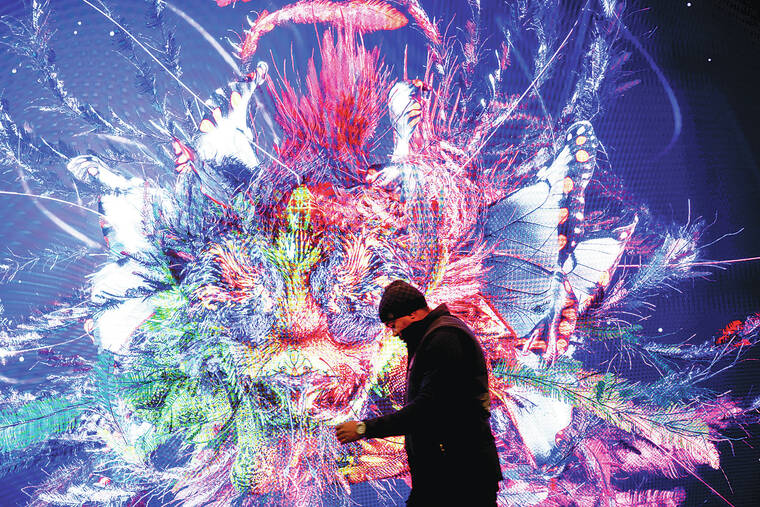Tech View: Local teachers embrace AI, encourage exploration
Artificial intelligence permeates every business sector and is seeping into every corner of everyday life. Its inevitable arrival in schools, however, is among the most controversial changes. Artificial intelligence (AI) is becoming increasingly prevalent in schools, despite some fear it will lead to cheating in writing or communication skills. Two high school teachers, Gabriel Yanagihara and Sam Anderson-Moxley, from West Hawaii Explorations Academy, are leading local teachers to embrace AI in their classrooms and use it outside of the classroom. They have released Roborubrics, an AI-powered tool that helps teachers evaluate and provide feedback on assignments based on a scoring guide they can customize for each assignment, and Yanagharak has developed free AI training for any school across the state. Both teachers believe that banning AI is a mistake and puts students at a disadvantage. However, a Pew Research survey found that two out of three educators have not used AI and over 70% have had no training on it.

Published : one year ago by None in Tech
Artificial intelligence permeates every business sector and is seeping into every corner of everyday life. Its inevitable arrival in schools, however, is among the most controversial changes. Read more
Artificial intelligence permeates every business sector and is seeping into every corner of everyday life. Its inevitable arrival in schools, however, is among the most controversial changes.
One of the first scenarios to come up in any AI conversation is the fear that students will cheat with it, using it to write essays for them. And they are. But calculators didn’t kill math education, and AI won’t kill writing — or at least communication skills.
AI belongs in the classroom. And two high school teachers are all-in on the emerging tech.
Gabriel Yanagihara from ‘Iolani School and Sam Anderson-Moxley from West Hawaii Explorations Academy are experimenting with AI, applying it to their work, and even building with it outside the classroom. And both educators have the support of their respective forward-looking educational institutions.
Anderson-Moxley recently released Roborubrics, an AI-powered tool that helps teachers evaluate and provide feedback on assignments based on a scoring guide they can customize for each assignment.
Yanagihara, meanwhile, has developed free AI training for any school, already reaching more than 300 teachers across the state. At the 2024 Hawaii STEM Conference that begins Thursday, he will show how AI can help students write and illustrate children’s books.
“Education should not only be about memorizing facts … but should transition to what you do to affect the world around you with that knowledge,” Anderson-Moxley said. “AI really brings us the post-information-scarcity age that the internet had previously promised us.”
Whether or not teachers are ready, students are increasingly experimenting with AI, according to a Pew Research survey. Two-thirds of U.S. teens say they have heard of ChatGPT, and one in five have already used it for schoolwork.
“Students often adapt to new technologies quicker than adults, and AI is no exception,” Yanagihara said. “While there’s excitement in seeing students embrace AI, it comes with the responsibility to guide them in understanding its implications fully.”
Both agree that banning AI is a mistake and puts our students at a disadvantage.
“The goal is to foster a generation that is not only technologically proficient but also ethically conscious as these tools are massive force multipliers for both good and (bad), depending on the wielder,” Yanagihara said.
And both say AI has helped them become more efficient educators — giving them the time and space to be more creative and thoughtful in the classroom.
They are in the minority, however. Another Pew study found two out of three educators haven’t used AI in their work, and over 70% say they have had no training on it.
“The best way to learn is to play with the tool, experiment and have fun with it,” he said. “If anyone should be playing with AI, it’s teachers.”
“For those looking to explore AI and its effects on education and teaching, I would tell them to regress themselves,” Yanagihara added. “Become the student again and teach yourself something you’ve never thought to learn, with AI as your guide.”
Our educators could certainly use the help.
“Teachers are overworked and underpaid … work an average of 53 hours a week, and they don’t qualify for overtime,” Anderson-Moxley said. “If a teacher has 120 students, taking just five minutes per assignment to give feedback means ten extra hours of work per week.”
He said he built Roborubrics to give teachers back valuable time, and to harness AI to make grading more consistent, “because it will never get tired, hungry or have a tough day.”
“It significantly enriches my teaching, allowing me to introduce fresh perspectives and innovative applications into the classroom — experiences that I think all teachers should have,” he said. “Once we start teaching, it takes up so much of our time that we sometimes struggle to keep growing as individuals.”
Yanagihara said AI can make a big difference for Hawaii.
“AI can transcend our geographical challenges and propel us into a position of global competitiveness,” he said. “From tourism and agriculture to renewable energy and creative media, AI presents us with a chance to pioneer solutions that are both innovative and aligned with sustainable practices which were previously impossible.”
Tech journalist Ryan Kawailani Ozawa covers AI in Hawaii at Hawaiian.AI, where you can find the full interview along with information on other local AI news and events.
Topics: AI
